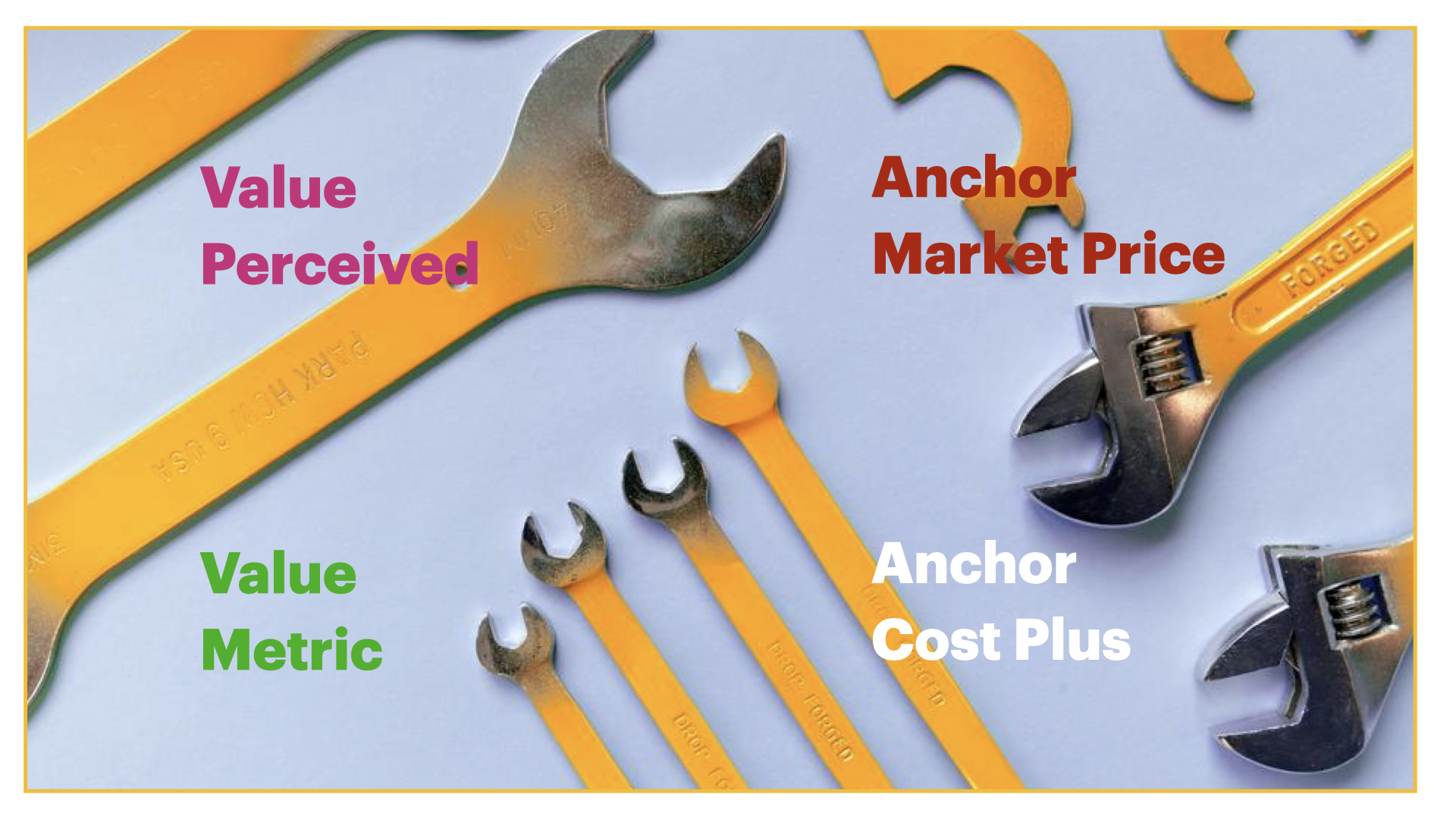Monetization Law Number #5
Value pricing is more optimal than cost-plus or anchor-based pricing
Value pricing offers the promise of alignment to a customer’s objectives by the ‘use more, pay more’ principle.
Pricing value, not costs; Value alignment to customer outcomes can supercharge your revenue.
This chapter is about how value pricing [[as opposed to cost-based pricing]] can be utilised to increase your monetization by the selection of the expansion value metrics.
The Rule provides a quick monetization heuristic i.e. a rule of thumb in operation, a kind of —do this— and you’ll be 80% of the way there.
Rationale explains why the rule works with deeper insights and its use in practice.
Rabbit hole provides more in-depth resources and recommendations for anyone wanting to spend more hours researching each topic.
⓵ Rule 📖
⓶ Rationale 🧠
⓷ Rabbit Hole 🐇
⓵ Rule: Monetization Law #5 📖
Value pricing allied to a solid value metric is usually better than cost-plus or anchor-based pricing
⓶ Rationale: Monetization Law #5 🧠
In many ways, a simple view into this pricing ethos is: about us, about the market, or about the customer. So what does this mean?
About us is where the price that you charge the customer depends on your cost base. Efficiency, operational insight, supply chain management, and manufacturing expertise all factor into your price.
This is all about you, your company and your people. The customer is important but only comes into focus at the end of a long process of internal thinking. This is the preserve of traditional manufacturing, production and service-based companies.
About the market is where the price you charge the customer depends on the market. The competitive forces your company faces the landscape of rivals and their actions.
Here, the customer represents the objective on the competitive battleground.
About the customer is where the price you charge aligns with the customer value that they derive from the product or service.
A charge that scales as they scale their value. A partner model. Customer-based pricing.
⓷ Rabbit Hole: Monetization Law #5 🐇
Pricing Value, Not Costs
In the past, pricing was straightforward. You added up all your costs and slapped a margin on top. The goal was simple, reduce your supply and manufacturing costs, and increase your sales. Wave after wave of disruption has turned this model into somewhat of a relic.
Disintermediation resulted in the reduction of traditional supply intermediaries. While Decoupling broke traditional customer value chains and Bundling enabled the packaging of several features or product sets to create multiple unique value propositions.
These have resulted in a blurring of the lines of both the cost and customer value construct.
Additionally, in software markets where upfront development costs often represent the most significant load, cost-based pricing began to look too simplistic.
Pricing value
In the software era, pricing value has emerged as the de facto go-to model. This is primarily due to marginal costs being lower than traditional businesses and the asymmetric upside offered as the customer base grows.
Competitive pricing can still be a factor, as an anchor to the value metric. This tends to occur more when the market for that product becomes saturated with very similar products.
Value-Based Pricing Models
We categorise the two main value pricing models as:
–Perceived Value Pricing
–Metric or Measured Value Pricing
Perceived value is how we price luxury goods. The value derives from perception, a belief, a way of thinking - perhaps most readily demonstrated by brand. The brand conveys a message, a status, an associated benefit that transcends the base product or service construct.
A Nike labelled white T-Shirt priced at $40 v’s the same manufactured T-Shirt retailing at $10 provides an example.
Metric or measured value is where the value in use forms a key determinant. The perceived model has a value in use, but this cannot be easily measured, whereas the value-metric model relies on the precise measurement of value accrued. There are two elements to this pricing.
base cost per unit of measure, and
the actual unit of measure
Anchor Based Pricing Models
We categorise the two main anchor pricing models as:
–Cost Plus Pricing
–Competitive Market Pricing
Cost-plus pricing describes summing up all your cost and adding a pre-defined margin on top. Alas, this is anything but simple. Cost structures contain a mixture of fixed, marginal, stepped, channel, and many many more cost drivers. Establishing an exact cost is not a simple exercise.
Therefore this method was best used in production environments where there is broad homogeneity in the goods produced.
Competitive Market Pricing is carried out by laterally looking to the marketplace in which you operate and determining your price in the context of that benchmark.
This model turns on the view that customers cannot discern the differences in product or service quality amongst market players and, therefore, focus on price. In marketing terms, the law of the ladder plays a part.
Which rung you occupy will also impact where you adjust your pricing, up or down, from this benchmark.
🐇 Additional Research 🐇
For further dives down the rabbit hole, the guys and girls at ProfitWell are first amongst equals. Check out one of their excellent deep dives here and sign up for their training material on their website. A content marketing masterclass!


